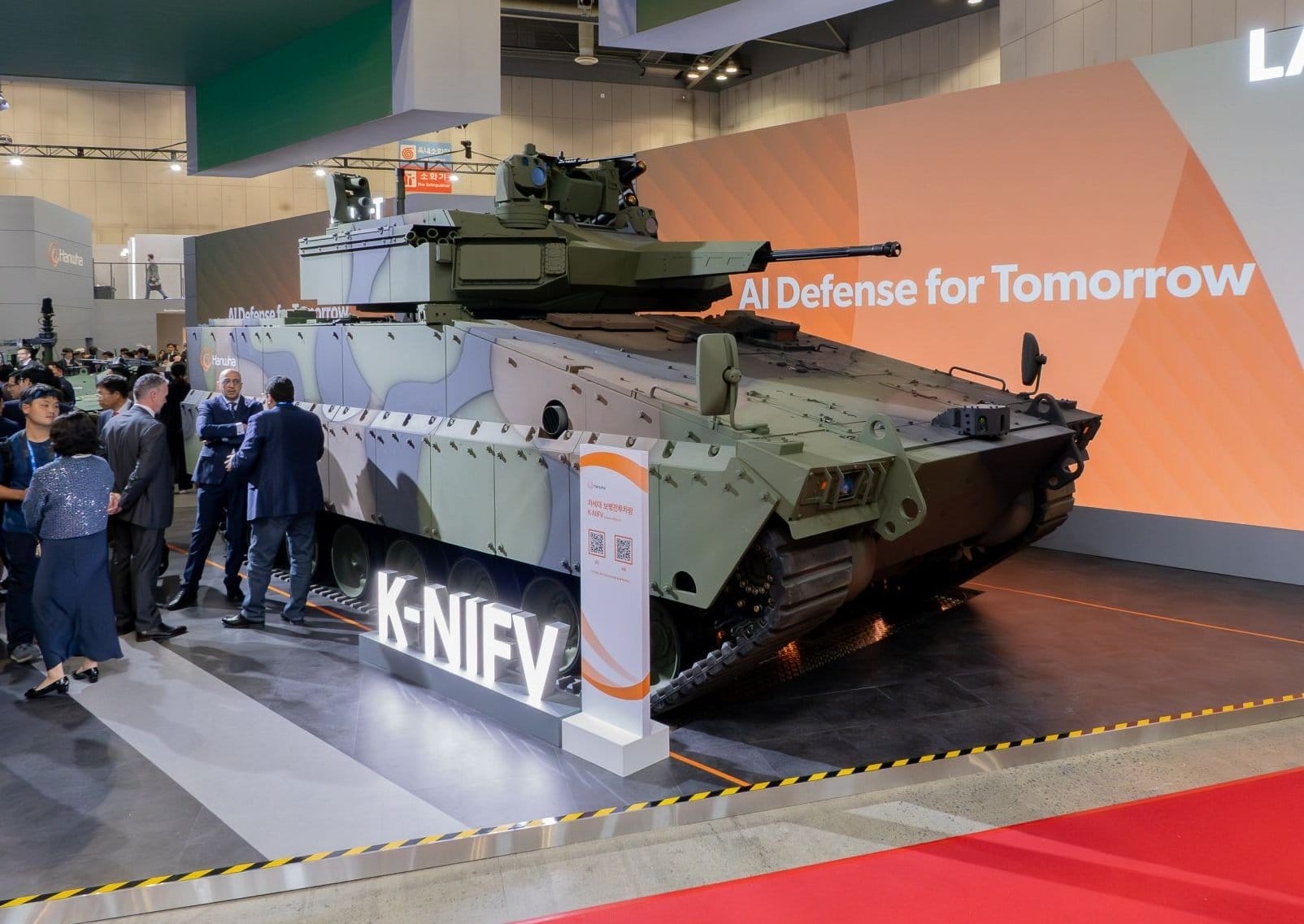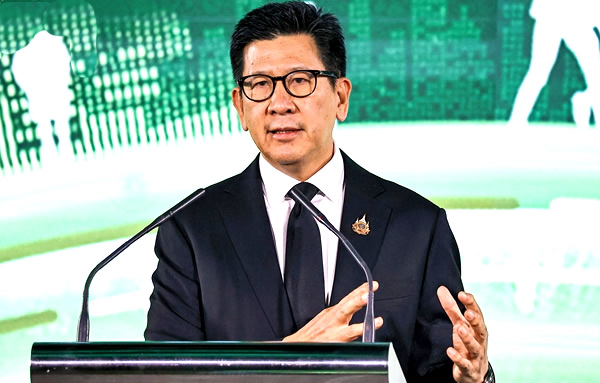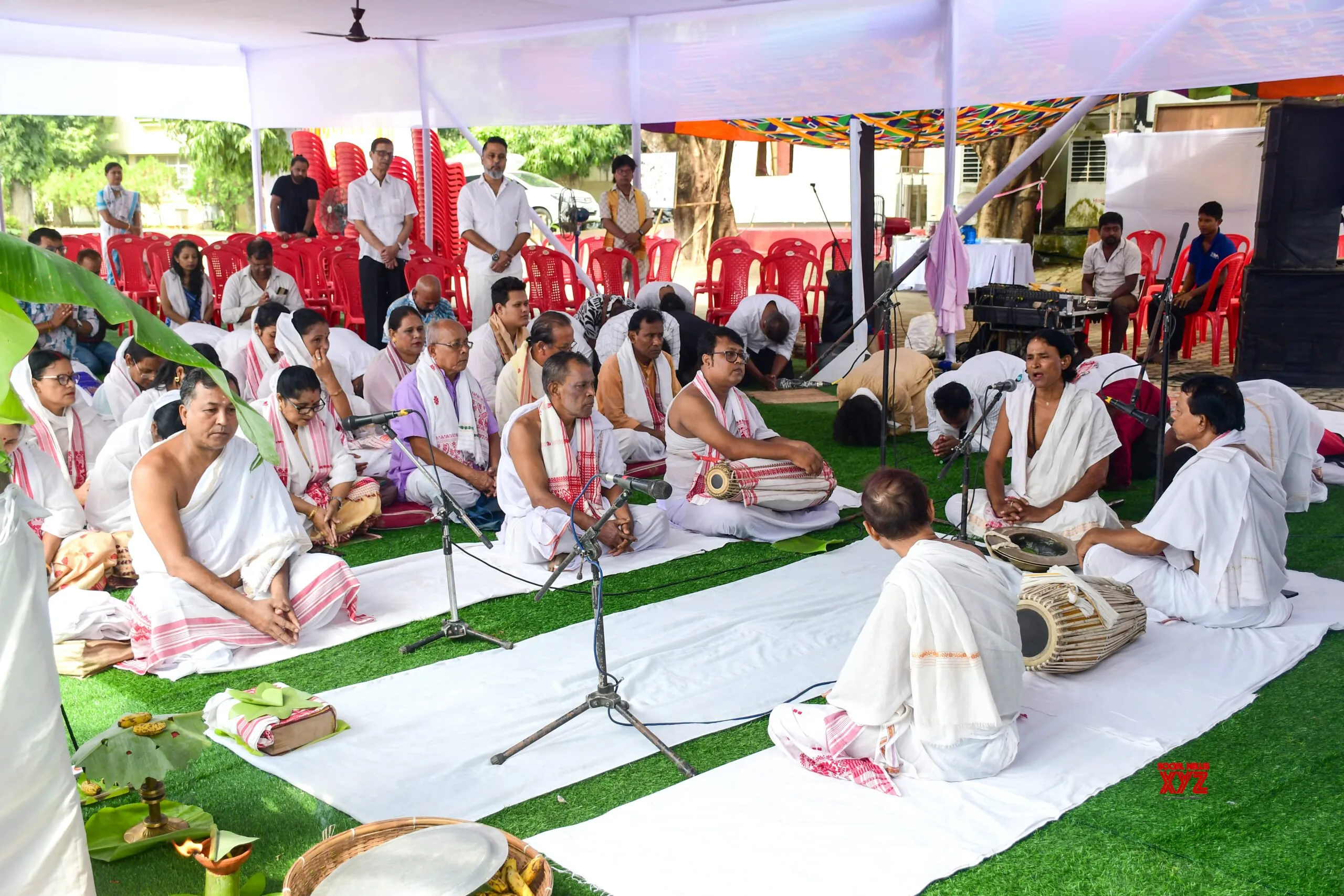Copyright asianmilitaryreview

Indeed, it applies experiences of the Russo-Ukraine conflict, such as addressing operating in a contested environment, dealing with drones, electronic warfare and long-range precision weapons. Operationally, the K-NIFV is based on the company’s Redback soon to be fielded by the Australian Army. However, it introduces several configuration trends and technologies such as substituting an unmanned turret for a manned one. This permits an increase in the number of dismounts to eight soldiers, enhancing protection and enabling the offering of either a 30mm autocannon (as displayed), or a 40mm weapon with case-telescoped ammunition. For the latter, options include the domestically developed 40mm cannon from SNT Dynamics or the 40CTC by CTA International. Other armaments include a coaxial 7.62mm machine gun, a twin retractable antitank guided missile launcher, and a roof-mounted independent remote weapon station from Hanwha Aero LS. The missile displayed was Hanwha Aerospace’s TAipers-L that has a maximum range of 8km. Special attention is given to protection and survivability. Passive armour and mine protection is provided by Hanwha and South Korean firm Welcron. A Hanwha-developed active protection system (APS) is integrated that utilises two trainable dual launchers for effectors. These are linked to four active electronically scanned array radar and electro-optic sensors at each corner of the turret. The K-NIFV also emphasises a counter-drone capability with artificial intelligence-enabled radar detection, aiming and auto-tracking. These facilitate long-range drone engagement by the main armament, as well as the “intelligent 12.7mm remote weapon station” at targets within 1,000m. The APS could provide a final very close 300m-range drone defeat level. Hanwha also separately showed an aircraft-adapted direct infrared countermeasure system that could be offered as an option. Emphasis on domestic content Hanwha representatives indicated to Asian Military Review that they deliberately focused on seeking domestic sources for many key K-NIFV subsystems. As a result, domestic sources include SNT Dynamics supplying the gun and transmission, Hanwha Systems delivering sensors and optics, plus an STX 1,000hp powerplant is used. This is intended to increase parts availability to support aggressive production demands and to limit the potential of export issues due to restrictions on foreign-supplied components. As Hanwha sees foreign markets as a critical opportunity, having this flexibility is of importance. Hanwha considers this approach easier to sustain and more affordable than depending on imported subsystems. The K-NIFV prototype shown has been undergoing certification, with Hanwha advocating for replacement of the Republic of Korea Army’s (ROKA) K200A1 vehicles fielded in the 1980s. Export are in view too, and the company has indicated interest from Italy, Norway, Romania, Saudi Arabia and the UAE. The company also outlined a Block 2 follow-on version that would have a hybrid powertrain, active suspension, composite APS suite and full-spectrum situational-awareness systems. This could complement the K21 now in ROKA service. Such a programme might see a product produced by around 2030.



